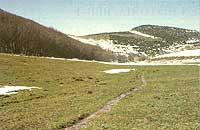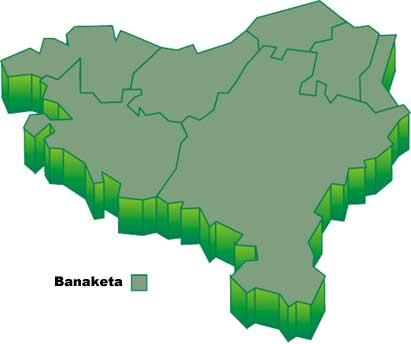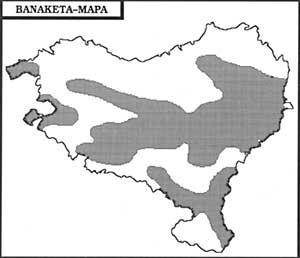Black Milano, rapacious opportunist
1992/02/01 Aihartza, Joxerra Iturria: Elhuyar aldizkaria
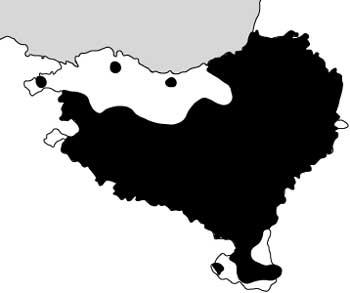
Towards March, and when the green colors of spring and the brightness of the new life dress the territories of Euskal Herria, in its skies predominates a rapacious bird of slender silk. In flight it appears dark and its flight is very calm, glider. Just give wing blow. As soon as you arrive, you begin to explore in flight under our mountains, meadows and banks, exploring corners in search of a piece that meets your needs.
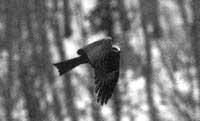
The black kite (Milvus nigrans) is a medium-sized predator: It has a length of 50-58 cm and a flight width of 110-150 cm and its weight ranges between 700 and 1100 g. This bright bird has its tail hanged, but not as much as the red milanos (Milvus milvus). If it can be seen from a certain distance, the head is lighter than the body and is surfaced with dark brown color. The back and coronation are also dark brown, while the belly is lighter, reddish brown and drawn from dark. In any case, and when it flies, the dark, almost black aspect predominates, hence its name. Therefore, around its black beak stand the wax of the face and the yellow color of the legs.
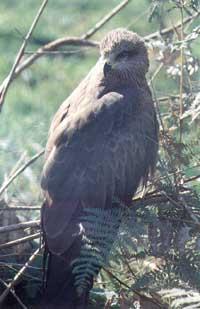
The black kite is an opportunistic and cosmopolitan bird. As for its geographical distribution, it can be said that it lives in most of the climatic regions of Europe, Asia, Africa and Australia. One of the reasons for this wide distribution is undoubtedly the generalist nature of animal feed. And the black kite is a predator that feeds mainly on small vertebrates, and its hunting has fish, frogs, snakes, rats, mice, etc. In any case, the black kite is a loose hunter, so it mainly finds its dead or dying food, with a clear tendency to be scavenger.
In addition, the black kite has the ability to search for places of great food availability. Therefore, the search for food is often done on roads, riverbanks, special rural areas, etc., and will not explore new places, as long as it is saturated with the usual. The black kite uses small currents of air to travel the hunting territories planning in low flight without doing as little as possible.
Due to the wide food spectrum of the animal, and the local supply, the black kite is sometimes a great hunter of rodents, in others it will be mainly of fish carrion and, when it is profitable, it can also be a fine “cleaner” of landfills. On the other hand, in late summer it can become a grasshopper and chicharras hunter, as long as the food is abundant, it is able to eat anything that contains proteins.
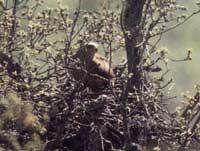
Although ethologically is soloist, when ecological conditions, and especially the availability of food, allow it, the black kite can appear in large groups in a region. Therefore, on the same side of the mountain, and a few meters away, you can see several nests at once, when the full time arrives. In these cases, the black kite presents territorialized behaviors, although it admits enough to the contemporaries if they do not approach the means closest to the nest.
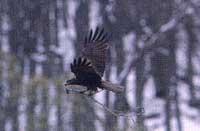
The nest is a compact structure of chopsticks and branches built on trees, in which paper remains, plastics, studs, etc. are often found. In the case of the black kite, the division of labour between sexes throughout the reproductive period is notorious. While the female takes care of the chitaje of 2-4 white eggs dotted with their backs, the male will have to gain food, defending at the same time the territory of the nest. Due to this division of labor and the need to maintain the unity of the couple, in the case of black milanos the copulas occur throughout the incubation period. Polyandroid phenomena can also be given to meet the needs of the female and the milestones when in a territory there are few foods or the male does not get enough food. In these cases the same female copulates with two or three males, which also help to grow.
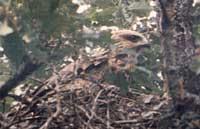
The incubation of the eggs lasts for 32 days and the chicks that are born after that time intersect dressed in white feathers. Until the chickens are tight, their feeding and that of the female will remain the function of the male. However, from the third or fourth week, the female also begins to leave the nest and performs between both feeding tasks of the offspring.
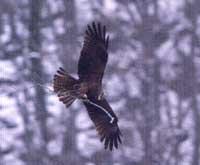
Due to the breadth of the trophic possibilities of these birds, there are usually no major disputes and competitions between the txitos, so most of the chicks born are usually ready to fly in six weeks. In any case, the young Milanos will continue flying around the nest three or four more weeks before embarking on the journey to Africa towards July and towards the winter territories of southern Sahara.
In the Basque Country the black kite is common nesting throughout Alava, especially in the Llanada, Zadorra basin and Ebro area. In the Cantabrian area it is much smaller, especially near the estuary of the Bidasoa and in Lapurdi. Finally, in Navarre and Zuberoa it can be found practically everywhere, but the most abundant is in the center of Navarre and in the Ribera. As for the current situation of the species, we can say that it is quite good, due, among other reasons, to the opportunistic character of the animal and its scant interference with man.
Technical details of the species Milano black: Milvus nigransFAMILY:Accidents by order:
FALCONIFORMES:
BIRDS

Gai honi buruzko eduki gehiago
Elhuyarrek garatutako teknologia



